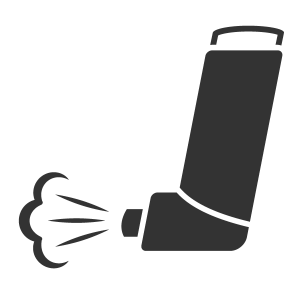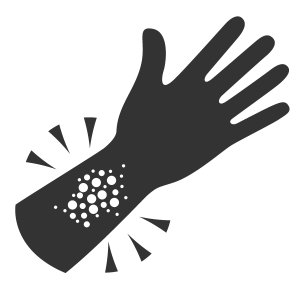The Allergy Epidemic
In the UK one in sixteen children under the age of 6 years will develop food allergies, one in four eczema, one in five asthma and one in ten hay fever. There is evidence that all these diseases have increased substantially over the last 10 years – peanut allergy having more than doubled. The burden falls most heavily on children.
Food allergy is the most common cause of anaphylaxis outside a hospital setting. It can be fatal and it can erode or inhibit normal formative experiences in childhood. Food allergy together with eczema, asthma and hay fever significantly impact on a child's quality of life, cause school absence and have been shown to impair school performance.

Food Allergy
Food allergy is common affecting 6% of children in the UK. Equallly important as identifying which foods are responsible for allergic reactions is recognising when foods do not need to be excluded from the diet and can be safely consumed.
Food allergy often occurs in conjunction with other allergic condtions, particularly eczema. In fact the earlier the onset of eczema and the greater its severity, the greater the possibility of an underlying food allergy.
Unfortunately previous consumption is not required to lead to a food allergy developing. The majority of children with a peanut allergy react the first time they consume peanuts. Similarly persistent refusal of a food in a child can be the manifestation of a food allergy problem. A good history includes establishing which of the principal allergenic foods have been consumed in sufficient quantity and frequency to provide the reassurance that the child is tolerant of these foods.
With recognition of a food allergy comes management including family education for dealing with possible future reactions, provision of individualised treatment plans and professional dietary advice where necessary.
Food allergy can present with well recognised symptoms such as hives and swelling, but other presentations can be diverse including reflux, constipation, eczema, poor weight gain and diarrhoea.
Diagnosis relies on taking a comprehensive history with testing for antibodies to food using skin prick tests, blood tests and food challenges where necessary. The prognosis for most food allergies is good with follow up assessments guiding whether this is taking place.

Asthma
All that wheezes is not asthma and a paediatric allergist has an important role to play in distinguishing between those children with so called atopic asthma and those with wheezing through other causes. Asthma now affects 20% of children. This can result in school absence, troublesome night time symptoms and missing out on activities including sport.
The identification of airborne allergens can be pivotal in improving the management and quality of life of children with asthma. Approximately 10% of UK children have antibodies to house dust mite. Other allergens can include domestic pets, horses, pollens and moulds.
Confirmation of asthma control is now possible with sensitive spirometry and measurements of exhaled nitric oxide.
Good control of asthma is particularly important in those children with food allergies.
Management options for those more severely affected include immunotherapy for airborne allergens as well as consideration for referral for anti-IgE therapy.

Eczema
Eczema (atopic dermatitis) affects up to a quarter of UK children. Eczema tends to be one of the earliest presentations of allergic disease in a child and is a strong predictor of other allergic problems including food allergies.
Appropriate management is essential for reducing distress and discomfort both for the chid and the family and improving quality of life. This includes identifying allergens (both food and airborne) that might be contributing to the problem.
Eczema is a manifestation of an impaired skin barrier. The value of simple moisturizing creams used generously, in maintaining the skin barrier is increasingly recognized.
Advice can be given on where other therapies such as steroid creams may be required and the role complementary therapies have to play.

Hay Fever
Allergic rhinitis affects one in ten children by the age of six. It can affect children throughout the year or be seasonal (hayfever).
Whilst often seen as not much more than an irritation, the effects of hay fever have recently been shown to be of much more significance. In the UK school GCSE and A level exams take place during the peak of the pollen season. Recent research has shown that children with hayfever are 50% more likely to drop a grade from their mock exams, sat in winter outside of the pollen season, compared with their real exams sat in summer.
Parents are often uncertain what the most appropriate treatments are to be using for the management of their child’s hay fever. Sedating antihistamines are often used and the exam results research showed that children using these were 70% more likely to drop a grade.
Recognition of the allergens contributing to allergic rhinitis allows appropriate advice to be given about allergen avoidance (in the case of house dust mite problems), mediations choices and exciting new therapies such as desensitisation (see Immunotherapy section).